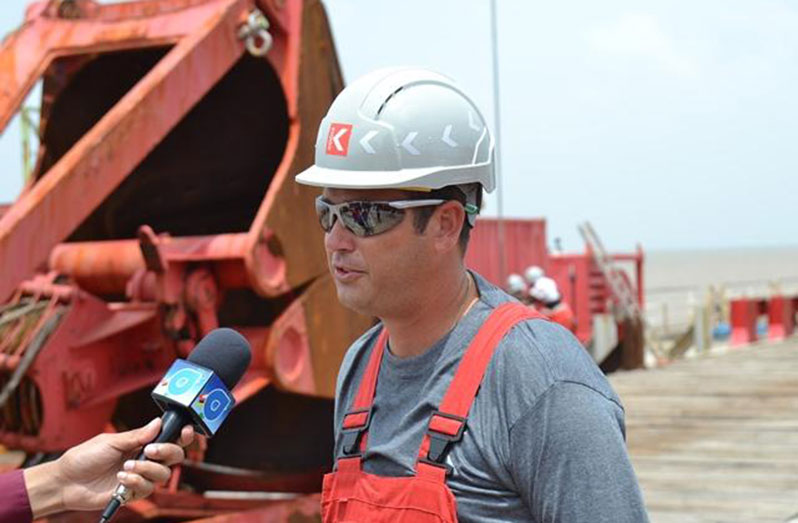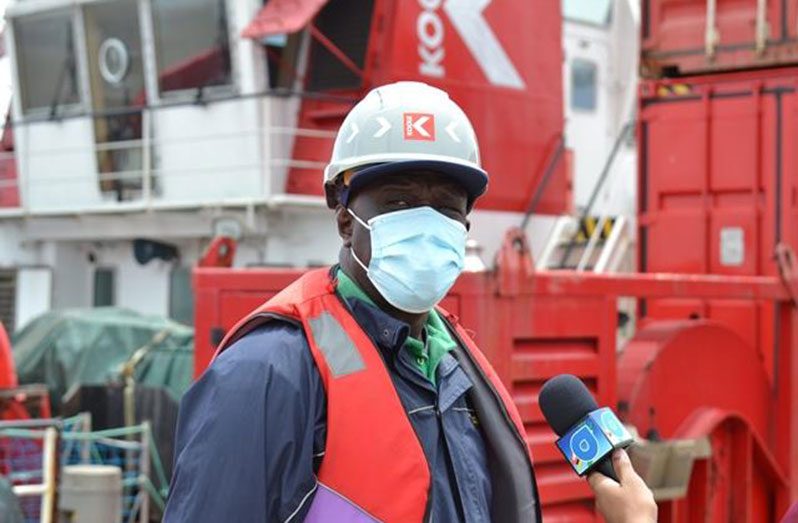AS marine traffic continues to increase along the Demerara River, the authorities have awarded a $787.6 million contract to remove wreckages that have been encumbering the waterway.
The government, via its Department of Public Information (DPI), announced that a Dutch maritime solutions provider has been hired by the Ministry of Public Works’ Maritime Administration Department (MARAD) to execute the contract.
According to the DPI, the contract for the works was signed early last month between Director-General at MARAD, Stephen Thomas and Koole Contractors’ representative, Janneke Kuijper.
The government’s information department, which was privy to the wreckage-removal exercise, quoted Harbour Master (ag) Glasgow Archer as emphasising the need for clearing the important channel.

“These wrecks present have hindered and, I would say, restrict [sic] more or less, the manoeuvring of vessels within the harbours or in close proximity to the harbours,” Archer said.
He related that removal of the wreckages from the waterway will facilitate easier and more accurate navigation. “It will [also] enable safe navigation,” Archer added.
He related to the DPI that even though attempts were made to remove the wreckages in the past, those efforts were not successful.
Maritime officials have now expressed optimism that the Dutch company will be successful in clearing the much-traversed waterway, thereby making it safer for travels.
Marc Rooijakkers, who is the project manager for the Koole Contractors’ project, was quoted by DPI as saying that Saturday was the first day of the project and that it was the company’s intention to spend the day orienting itself with the location of its first undersea target – an old barge.
It was reported that once the company has been able to locate the wreckages, it will employ one of its custom-built machines to cut up the wreckages, then remove them from the sea bit by bit.

The dissection and removal of the barge alone is expected to last for a period of two weeks.
“It is a barge, about 50 by 12.5 metres, and we’re going to remove this wreck with the chisel method,” Rooijakkers told the government agency.
Pieces of the wreckage will be lifted out of the river, using equipment called the grapple. “The chisel method is a method that we developed ourselves, with Koole Contractors, Rooijakkers said.
He explained that the contraption is basically a 17.5-tonne steel plate which can be used to lift pieces of the wreckage by as much as 22 metres high.
“… and then we let it fall with a free fall,” Rooijakkers noted.
THE PROCESS
He said that “as soon as the wreck is hit into small sections with the steel plate, we will connect the grapple, and with the grapple, we will lift out the several wreck sections.”
The project manager continued, that depending on the state of the wreck, the grapple can also break the wreck into sections.
In a detailed breakdown of the process, Rooijakkers explained that “as soon as we have a firm grip on the wreck, then we can lift the wreck on board the vessel into small sections, and escort them on board the barge.”
The contracted company was specifically tasked with removing three large pieces of wreckage. Asked for a timeframe for the project, Rooijakkers said that the company “can’t know for sure how long it will take to remove all three wreckages.”
He noted, however that the company is working with a rough estimate of two to three months.
The need for removal of the underwater wreckages was highlighted since 2018 when the then secretary of the Private Sector Commission, Komal Singh, highlighted the dangers that the wreckages pose to those using Guyana’s rivers.
Speaking at the 2018 Shipping Association of Guyana’s Eighth annual awards and dinner, Singh made specific reference to the possibility of fuel-laden, single-hull vessels drifting and slamming into the wrecks.
“Imagine one day if that vessel lose [sic] power, runs into one of those wrecks and we have a thousand barrels of fuel oil spill in our waterway and our river runs about four knots to the hour and the tide is coming in and we have over-topping of walls; imagine the amount of issues that we’ll have locally,” Singh noted hypothetically.
He reasoned: “We won’t have any time to deal with all the big companies that are coming in and are drilling for oil a 100 miles offshore.”
Demerara Waves online news had reported on the response of the then Finance Minister Winston Jordan, who said that such risks add to the increase in cost for the acquisition of fuels. Even so, the river was not cleared under the then A Partnership for National Unity + Alliance For Change Government.



.jpg)











